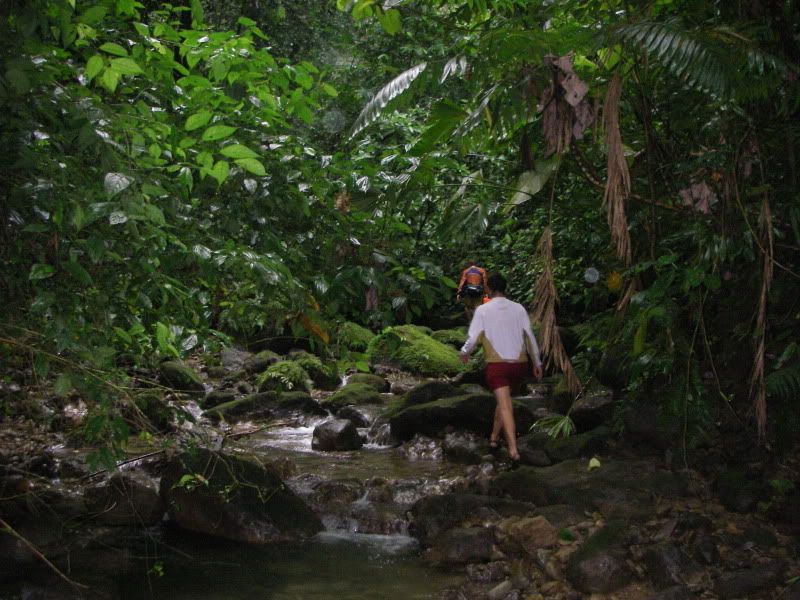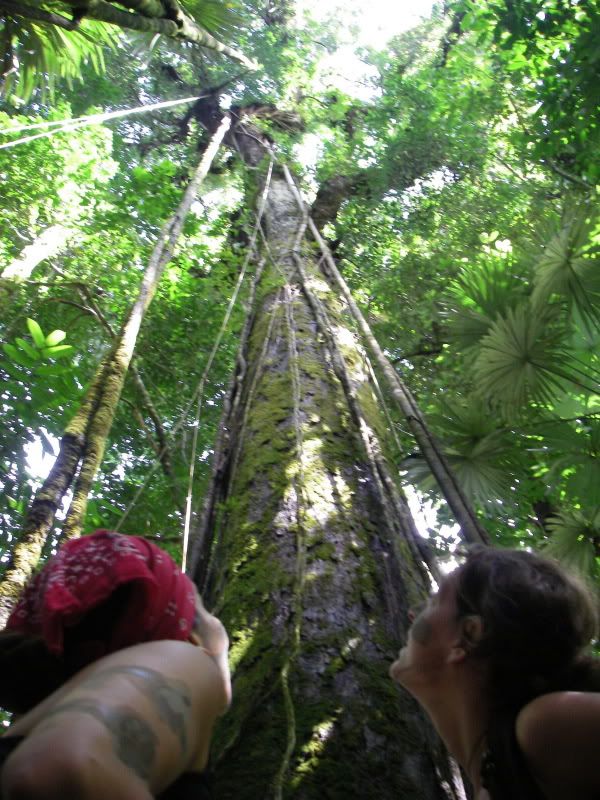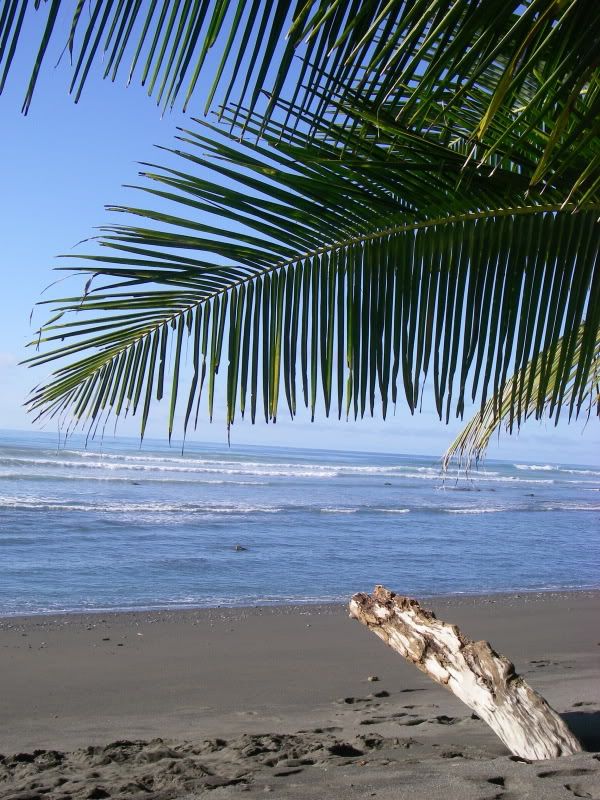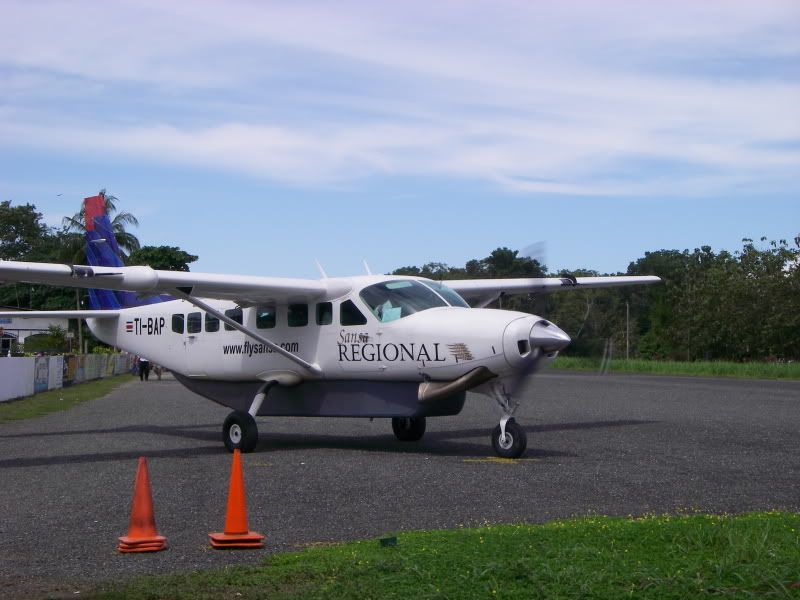Class IV Trip
The NOC Costa Rica Class IV trip sets out to run the most exciting and beautiful rivers in Costa Rica. The runs on this trip tend to be very continuous class III-III+ with some Class IV sections mixed in. While the rapids are not solid class IV, the high level of commitment due to poor accessibility combined with the potential for flash flooding mean you need to have Class IV river running skills to safely navigate these sections. Examples of skills commonly demanded from the paddler on these runs are strong cross current maneuvers, running blind rapids, hole punching and reading water on the fly. The following is a day-by-day description of the last Class IV trip we ran. Keep in mind the none of these trips will ever be exactly the same due to varying water levels, weather conditions and strength of the group.

Saturday, Nov 25 2006
After outfitting boats and getting to know everyone we went to dinner at one of our favorite restaurants in San Jose, Machu Pichu. This Peruvian themed restaurant serves up some great seafood dishes and one of the best Pisco Sours outside of Chile. A few of those Sours and a fine seafood meal of delicious corvina (sea bass) and we were all ready to rest up for tomorrow's adventure.
Sunday, Nov 26 2006
In the morning we loaded our Coaster and greeted our awesome driver, Ruben, and  off we went to the Rio Balsa. The Rio Balsa is situated north west of San Jose, on the way to the town of Fortuna. This river starts out with a really fun Class III rapid and then keeps on going with some very easy and continuous Class III water that is just lots of fun. The Rio Balsa is just the perfect warm up for this trip, it is a low stress introduction to the continuous nature of the rivers in Costa Rica and is really beautiful
off we went to the Rio Balsa. The Rio Balsa is situated north west of San Jose, on the way to the town of Fortuna. This river starts out with a really fun Class III rapid and then keeps on going with some very easy and continuous Class III water that is just lots of fun. The Rio Balsa is just the perfect warm up for this trip, it is a low stress introduction to the continuous nature of the rivers in Costa Rica and is really beautiful  We passed by some spider monkeys chilling in a tree and saw some of the larger water fowl, blue herons, egrets and cormorants. After a nice day of paddling and a traditional casado dinner, we had to give our muscles the ultimate treat at the Baldi Hot tubs. This place is just great, huge hot pools, fed from the natural thermal waters of the Volcano Arenal that have mystical healing powers. With pools of varying temperature, from 104 to 153, there was a pool for everyone. We had a little contest to see who could stay the longest in the 153 degree pool, 23 seconds was the longest full body immersion, that was pretty hot. Almost everyone eventually settled into the pool with the big bar in it, hard to beat soaking with a Pina Colada in your hand.
We passed by some spider monkeys chilling in a tree and saw some of the larger water fowl, blue herons, egrets and cormorants. After a nice day of paddling and a traditional casado dinner, we had to give our muscles the ultimate treat at the Baldi Hot tubs. This place is just great, huge hot pools, fed from the natural thermal waters of the Volcano Arenal that have mystical healing powers. With pools of varying temperature, from 104 to 153, there was a pool for everyone. We had a little contest to see who could stay the longest in the 153 degree pool, 23 seconds was the longest full body immersion, that was pretty hot. Almost everyone eventually settled into the pool with the big bar in it, hard to beat soaking with a Pina Colada in your hand.
 Monday, Nov 27 2006
Monday, Nov 27 2006
We loaded up and headed to La Virgen to paddle the Upper Serapique river. This is a real classic Costa Rican river with lots of braided rocky rapids, fun play features and lots of avian life, the Serapique is just lots of fun. The rivers starts out with a very technical rapid called, Cafe da Manhan (trans: Morning Coffee), that at the level we paddled it was Class III+ but at higher water is definitely a Class IV. The river did not let up at all after that, having a very consistent gradient it remained very fun Class III-III+ for seven miles. Most of the folks took out at the first bridge but others in our group were not done paddling yet, so they opted to paddle another seven miles down to our hotel, the Selva Verde Lodge. We were serenaded by a troop of Howler monkeys and slept peaceful to the sounds of the tropical jungle.
Tuesday, Nov 28 2006
Today we ride the bull, el Rio Toro. We drove up river to the Recreo Verde and put in three or four miles above the main bridge. This is river has some really fun continuous Class III-III+ I have paddled. The upper part from Recreo Verde down to the bridge goes through some beautiful gorges, this part of the river is not accessible by land, the only way to get in here is going down the river. The inaccessibility of the run makes this a very committing section of river, no way to get out but going down the river. The lower part of the Rio Toro is pure fun, if you like wall shot rapids that is. A wall shot is when the river goes down a very shallow braided rapid then hits a wall and makes a 90 turn. That turn up against the wall can be tricky as the water is very funky and rolling in that funky water was a challenge. I counted over 25 wall shots on the lower section and there were probably more. At the end of the this day, Lori and the crew invented the "Wall Shot" shot, part coffee liqueur and part Centurion rum, we toasted the Rio Toro and enjoyed the warm tingly feeling it gave us.


Wednesday Nov 28 2006
Howler monkeys sent us on our way to the Rio Reventazion, one of the classic big water rivers of Costa Rica. A good way to think about this river is to imagine the lower Gauley River in West Virginia between 5000 and 7000 cfs. This river has some very long continuous Class IV-IV+ rapids, large exploding waves make a lot of the rapids hard to read from the top.The best way was to come to the top of a large wave in the rapid then shake the water out of your eyes quickly look for the holes. The holes on the Pascua section of the Rio Reventazion are big and juicy and would sometimes blindside you from the back side of some big waves. This river involved some powerful crosscurrent maneuvers and lots of hole punching. Some folks put in at the lower put in and paddled the Florida Section of the Reventazion, this section has some really fun big water wave surfing. After paddling thirteen miles of pushy hard hitting class IV, I was ready for my Imperial at the take out.
Thursday, Nov 29 2006
The original plan today was to take an easy day and paddle a short section of the Pacuare down to our campsite for the night. The gang was fired up to paddle though, so we decided to run the upper Pejibeye as well as part of the Pacuare. The upper Pacuare turned out to be a lot of fun, some very beautiful class IV rapids at the beginning which then mellowed out into some eddy hoppy class III. One of my all time favorite runs in Costa Rica. The quality of the water is so clear and the stream bed so fun and natural that it is just a pleasure to be on it. We paddled down about 5 miles and then ate lunch and loaded up for the Pacuare.
The road down to our Pacuare put in was a little steep and muddy for our Coaster so we had to hike down hill the last mile or so, but it was definitely worth it. A powerful tropical rainstorm moved in right over us and the river began rise. It rose slowly at first then just starting coming up very quickly making the 4 miles down to our campsite go very quickly indeed. The Pacuare rose about 4 feet in the space of one hour. We secured our boats way up in the woods and made our way to the Costa Rica Rios campsite, just an awesome campsite. We ate a nice dinner and drank wine and punch into the wee ours of the night. 
Friday November 30, 2006
Waking to a beautiful sunny day our little bungalows was really nice. The way the little bungalows are built you can lay in bed and still have a clear view down to the river, just a perfect way to wake up on a paddling trip. The Pacuare was still high but had already begun to drop, the side streams were running clear and the weather was sunny and clear, everything was pointed to a perfect day on the Rio Pacuare. It did not disappoint, we encountered some very exciting Class III+ and IV rapids downstream and everyone had a great last day of paddling on this trip.
 Brian in the middle of one of the last bigger rapids on the Upper Pacuare
Brian in the middle of one of the last bigger rapids on the Upper Pacuare Anne and I excited to be paddling on, and not working on, the Upper Pacuare
Anne and I excited to be paddling on, and not working on, the Upper Pacuare Me boofing the bottom drop of Lower Huacus on the Lower Pacuare
Me boofing the bottom drop of Lower Huacus on the Lower Pacuare






























